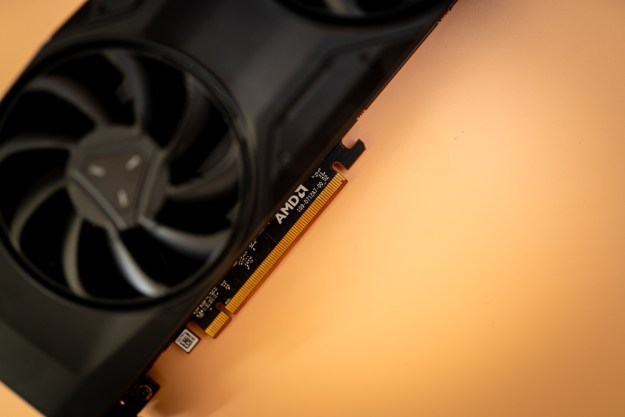
But there is still talk about a Radeon RX 500 Series of graphics cards slated for April. These products will not be based on the new Vega architecture, but rather the Polaris design used in the current Radeon RX 400 Series. Radeon Technologies Group head Raja Koduri even admitted at the event that GPU updates would be released during 2017.
“There’s a lot of speculation about our next series of gaming GPUs. I get asked many times on social media and all, ‘Hey when is 490 coming’ or ‘when is 580’ or ‘590.’ They’re inventing lots of brand names for us on what Vega is going to be called. We have a lot of interesting GPU updates lined up for the rest of the year.”
According to rumors, the Radeon RX 480 will be rebranded as the Radeon RX 580 and sold with an increased clock speed. The Radeon RX 470 will be rebranded as well, sporting a new Radeon RX 570 name and an increase clock speed. These two cards are expected to arrive on April 4.
After that, AMD will reportedly increase the clock speed of the Radeon RX 460 and rebrand it as the Radeon RX 560. AMD plans to launch a new card, too, called the Radeon RX 550, which will join the RX 560 when it hits retail shelves on April 11. AMD’s Radeon RX Vega cards aren’t expected to arrive until May or possibly during E3 2017 in early June.
Here is the list of rumored specs next to the current Radeon RX 400 Series cards:
| RX 580 | RX 480 | |
| Graphics chip: | Polaris 10 | Polaris 10 |
| Cores: | 2,304 | 2,304 |
| Texture Mapping Units: | 144 | 144 |
| Render Output Units: | 32 | 32 |
| FP32 Compute Performance: | 6.17 TFLOPS | 5.83 TFLOPS |
| Boost speed: | ~1,340MHz | 1,266MHz |
| Memory amount: | 4GB and 8GB GDDR5 | 4GB and 8GB GDDR5 |
| Memory speed: | 8,000MHz | 8,000MHz |
| Memory bus: | 256-bit | 256-bit |
| Bandwidth: | 256GBps | 256GBps |
| RX 570 | RX 470 | |
| Graphics chip: | Polaris 10 | Polaris 10 |
| Cores: | 2,048(?) | 2,048 |
| Texture Mapping Units: | 112(?) | 112 |
| Render Output Units: | 32 | 32 |
| FP32 Compute Performance: | 5.10 TFLOPS | 4.94 TFLOPS |
| Boost speed: | ~1,244MHz | 1,206MHz |
| Memory amount: | 4GB and 8GB GDDR5 | 4GB and 8GB GDDR5 |
| Memory speed: | 7,000MHz | 7,000MHz |
| Memory bus: | 256-bit | 256-bit |
| Bandwidth: | 224GBps | 211GBps |
| RX 560 | RX 460 | |
| Graphics chip: | Polaris 11 | Polaris 11 |
| Cores: | 1,024 | 896 |
| Texture Mapping Units: | 64 | 56 |
| Render Output Units: | 16 | 16 |
| FP32 Compute Performance: | 2.63 TFLOPS | 2.15 TFLOPS |
| Boost speed: | ~1,287MHz | 1,200MHz |
| Memory amount: | 4GB GDDR5 | 2GB and 4GB GDDR5 |
| Memory speed: | 7,000MHz | 7,000MHz |
| Memory bus: | 128-bit | 128-bit |
| Bandwidth: | 112GBps | 112GBps |
As for the Radeon RX 550, it may be based on a Polaris 12 graphics chip although that is merely speculation at this point. Actually, all of this is based on mere rumor and speculation, but at least we know something is in the Radeon pipeline outside the upcoming Vega lineup. Koduri admitted this during Tuesday’s press event, so perhaps there is some merit to the information listed above.
Editors' Recommendations
- Nvidia is the ‘GPU cartel,’ says former AMD Radeon manager
- AMD’s RX 7600 XT might be dead on arrival — but there’s a catch
- Why AMD’s biggest competitor is no longer Nvidia
- Someone tweaked AMD’s RX 7800 XT, and the results may surprise you
- AMD might still have some next-gen GPUs left in the tank — but I don’t buy it



